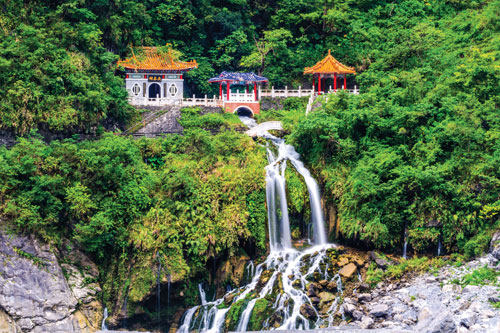While Taipei may be the mainstay of Taiwan’s tourism, the vast tourism resources and gems beyond the city are putting more secondary destinations on the map for Asian travellers.

With annual visitor arrivals exceeding 11 million last year, Taiwan now sees a greater need to divert touristic traffic beyond Taipei in the north to other parts of the island.
Kathy Yuan, Taiwan Tourism Bureau (TTB), international affairs division section chief, said: “Tourist traffic is concentrated in big cities and we hope to extend that focus to other places. Other than Kaohsiung, which is already building its reputation, Taichung, Tainan and now Hualien are on the radar.
“We hope to pursue Penghu and Taitung in future. In fact, Penghu plans to market itself as a cruise port; Keelong and Kaohsiung presently dominate the scene,” she added.
With HK Express inaugurating a twice-weekly Hong Kong-Hualien service last December, its second Taiwan route after Taichung, visitors can more easily access Hualien and discover its natural sites including Taroko Gorge and Meilunshan Park.
The airline’s director for commercial, Luke Lovegrove, said: “Our data showed a significant untapped market between Hualien and Hong Kong. We have been pleasantly surprised by the support shown by the local community in Hualien for this new direct route with Hong Kong.”
However, Pan Asia Tourist & Study Tour International, managing director, Danny Wong, commented: “The service hardly benefited us agents as it’a LCC with a direct-to-consumer sales strategy. If China Airlines operates this route, we’d definitely have a share.”
Meanwhile in Tainan, hospitality players are finding reason to cheer in new air routes, among other developments.
Shangri-La’s Far Eastern Plaza Hotel, Tainan, director of sales and marketing, Edward Lei, said the hotel has “benefited” from connections linking Hong Kong launched two years ago as well as Osaka and Ho Chi Minh City last year, especially since Japan and Hong Kong are two key international markets.
“Tainan is not well-known to overseas tourists so we are happy to see the city government step up efforts such as organising sightseeing tour buses,” he added.
According to Lei, the destination’s objectives for this year include uniting hoteliers for the first time for overseas travel exhibitions to promote Tainan. Possible target markets are China, Hong Kong and Japan.
Taiwan is also making headway in new markets like Thailand and Brunei, which were granted visa-free access in August 2016. A month later, visa rules were relaxed for individuals from Cambodia, Indonesia, Laos, Myanmar, the Philippines, Vietnam and India, and a one-stop online application was also introduced for these countries.
However, Lei sees few benefits of the visa relaxation rules for these emerging source markets to Tainan. “There will be no immediate benefit for secondary cities at this stage because first-time visitors may want to see the well-known tourist spots. They may consider (Tainan) only after their third visit.”
And while lauding TTB’s partnerships with airlines to get charter flights off the ground, Pan Asia’s Wong pointed out that the accessibility poses a challenge for east Taiwan despite its rich tourism resources.
“While the central, south and north of Taiwan are mature in transportation and infrastructures, the eastern part covering cities like Taitung and Hualien is not well developed,” Wong remarked.
As well, TTB’s Yuan admitted that a “proper airport” big enough to handle international flights could be the missing piece in the puzzle for some second-tier cities.
This article was first published in TTG Asia February 2017 issue. To read more, please view our digital edition or click here to subscribe.




















